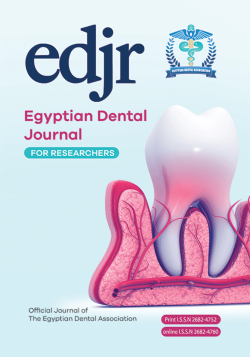Esraa Khairy Morsy, Enas Anter Abdel Ghafar And Sahar Hosny El Dessouky,
ABSTRACT
Objectives: The Study Aimed To Assess The Accuracy Of Linear Measurements On Three-dimensional (3D) Volume Rendered Images Generated From Cone Beam Computed Tomography (CBCT) In Comparison With Two-dimensional Multiplanar Reformatted Slices (2D MPR).
Materials and Methods: 16 Dry Human Skulls Were Scanned Using Planmeca Promax 3D Mid CBCT Machine, 23 Anatomical Landmarks Were Selected And Marked On Each Skull Using Gutta-percha Pieces, 14 Linear Measurements Were Taken Between Them Using Digital Caliper. Using A Third Party Software (In Vivo 5) The Same Linear Measurements Were Assessed On Both 3D VR Images And 2D MPR Ones. The Absolute Measurement Error �AME Was Assessed For Both Image Types, Then Compared Using Paired T-test.
Results: Paired T- Test Comparison Between ME Values Of Both Image Types Showed That Non-statistical Significant Difference Between Them Expect For MN Width� And �Me-POG�.
Conclusion: Linear Measurements On Both 3D VR And 2D MPR Images Are Reliable And Accurate When Compared With Direct Caliper Measurements With Slight Higher Accuracy In 3D VR Images.


